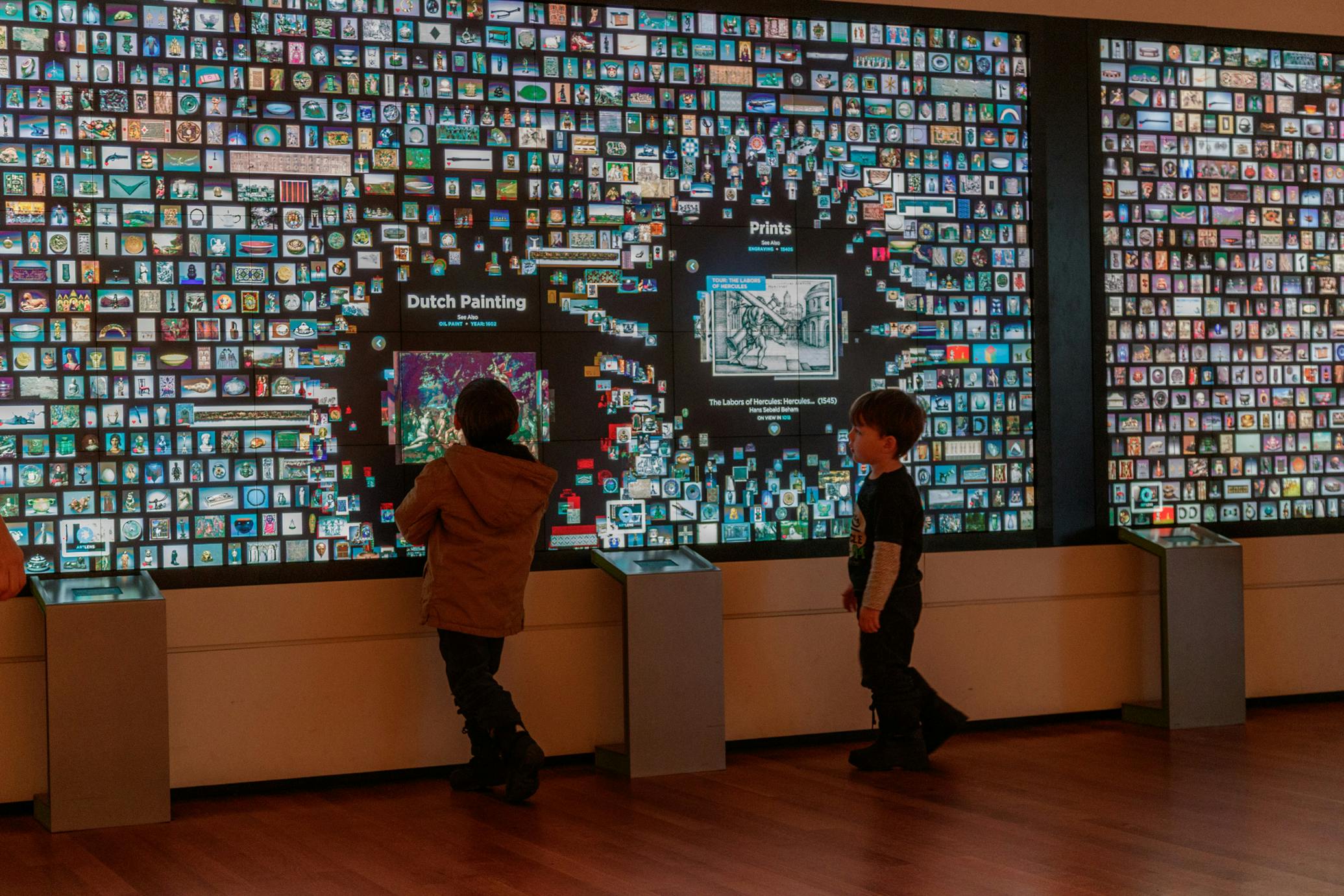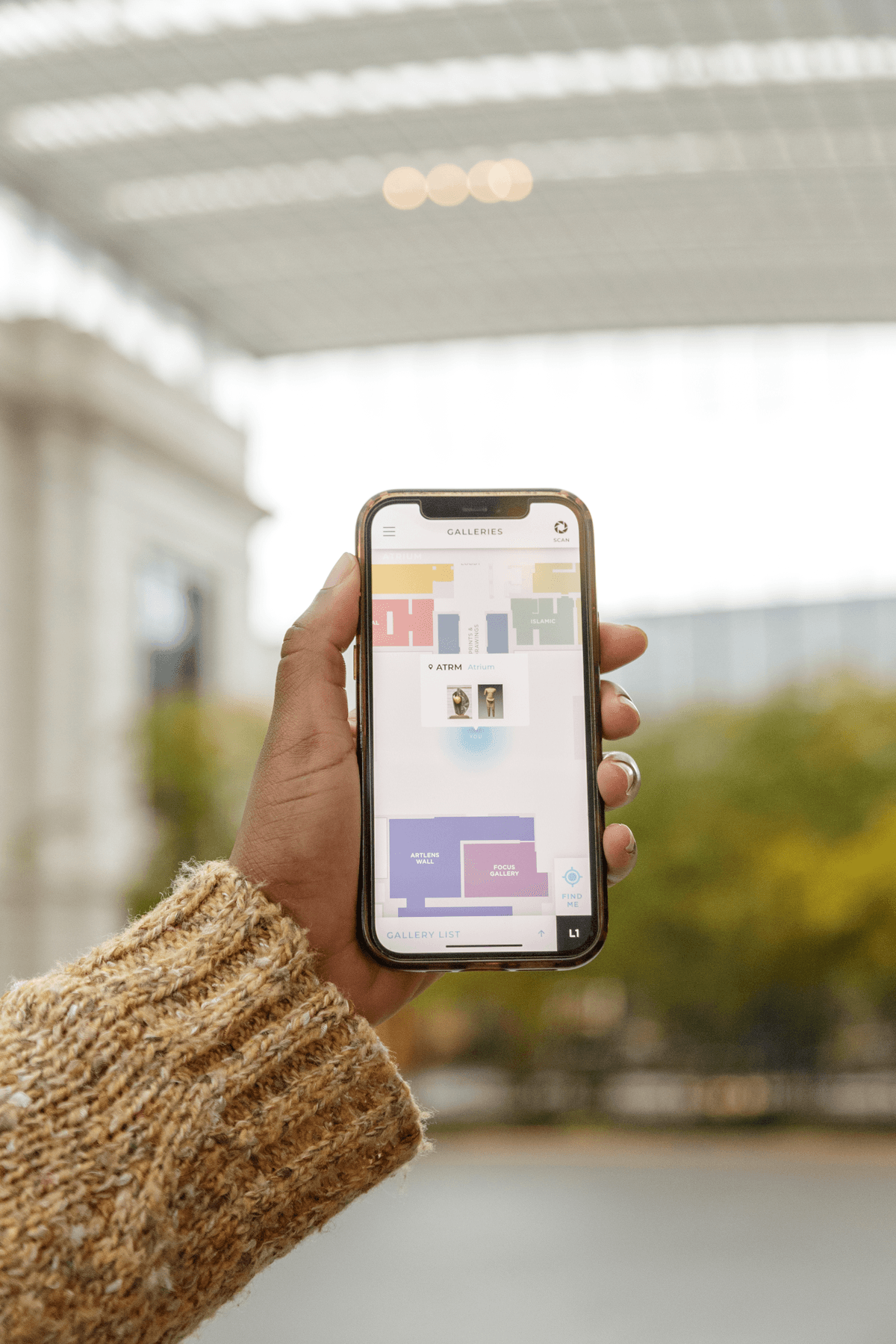ArtLens Wall

The ArtLens Wall, a 40-foot interactive, multitouch, MicroTile wall, displays in real time all works of art from the permanent collection currently on view in the galleries—between 4,200 and 4,500 artworks at any given time. In addition, the ArtLens Wall displays thematic groupings that may include highlighted artworks currently on loan as well as select light-sensitive artworks that are in storage.
The ArtLens Wall facilitates discovery and dialogue with other visitors and can serve as an orientation experience, allowing visitors to download existing visitor-created tours or create their own on their iOS or Android device. The largest such screen in the United States, the ArtLens Wall enables visitors to connect with objects in the collection in a playful and original way, making their visit a more powerful personal experience. Its display transitions every 40 seconds to keep things interesting—grouping artworks by theme and type, such as time period or materials and techniques, as well as by 32 curated views of the collection.
How It Works
Standing 5 feet by 40 feet, the ArtLens Wall is composed of 150 Christie MicroTiles and displays more than 23 million pixels, which is the equivalent of more than 23 720p HDTVs. The Christie iKit multitouch system allows multiple users to interact with the wall, simultaneously opening as many as 20 separate interfaces across the ArtLens Wall to explore the collection. Software was written using open Frameworks and runs on two Windows 7 workstations supported by four Linux servers processing the video across the wall, and Bluetooth connects iOS or Android devices.

High-resolution digital cameras ranging from 48 to 192 megapixels were used to photograph the CMA’s collection. These are publication-quality photographs as large as 50 by 40 inches, which will enlarge on a standard tablet, smartphone, or computer monitor to 220 by 160 inches for examining detail.
An application content management system updates the wall with high-resolution images of artwork, metadata, and the frequency with which each artwork has been “favorited” on the wall and from ArtLens App. Visitors can save favorites to their iOS/Android device on ArtLens App from the wall by placing their device on one of eight docking stations and connecting seamlessly using Bluetooth. The visitor’s favoriting and sharing activity creates metrics that enable museum staff to understand what artworks visitors are engaging with, creating a feedback loop with the museum. Visitors can also queue curated themes to display on the ArtLens Wall, playing them like a jukebox that changes every 40 seconds. These themes can be changed dynamically to connect with temporary exhibitions or create new ideas for the permanent collection.
ArtLens App

Open Access
Highlights from the Cleveland Museum of Art’s Open Access Initiative are now available as a tour, to favorite and save in the ArtLens App from the ArtLens Wall. Visit the ArtLens Wall to interact with open access collections with your colleagues, family, and friends. You can see all open access highlights on view in the Artlens Wall theme "Open Access Highlights." Dock your device at the ArtLens Wall and favorite artworks by selecting the heart icon. Artworks will save to the “You” section of the app. Then, use the app’s wayfinding technology to locate the artworks in the galleries.
Back-End System
The CMA established a standardized, well-documented development environment, including the follo: a master application programming interface used for integrating all artwork, artist/creator, and location information, a common framework for defining and testing the content structure and staff workbenches needed to manage both existing and new interactives, a consolidated content-delivery network platform for digital assets for all interactives (in ArtLens App, exhibitions, Collection Online, or any future interactive) for ease of management and troubleshooting, and a single method for connecting interactives to user devices for favorites and saving of user-generated content. The CMA’s custom-built catalog management system pulls live content, writes it once, and then updates it everywhere.